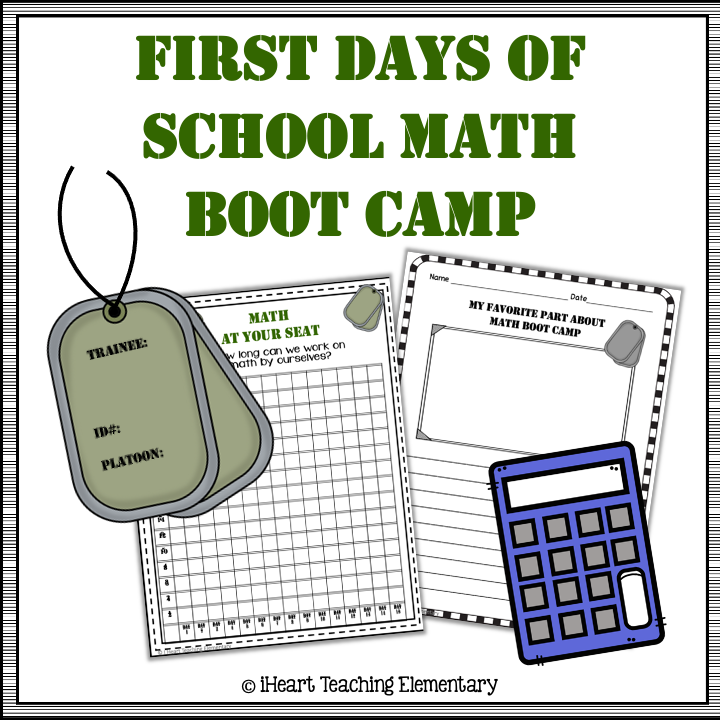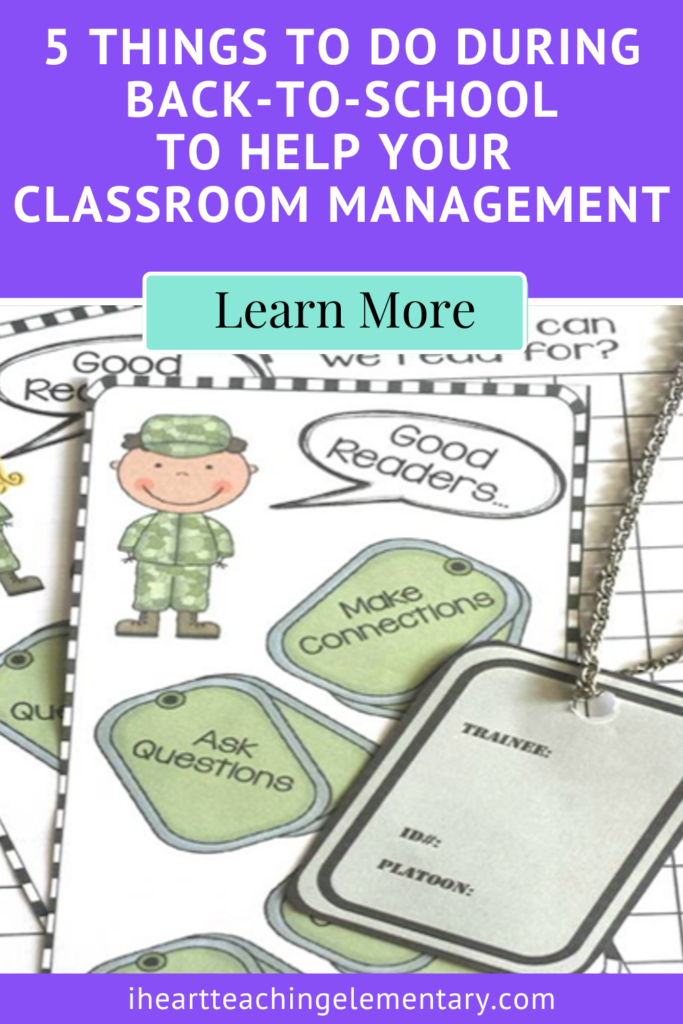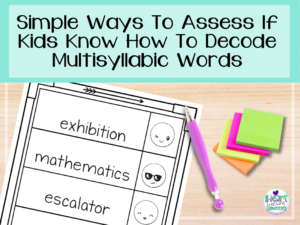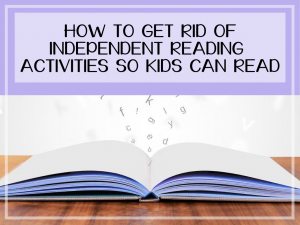It’s crucial to have a plan for classroom management during back-to-school season.
A well-managed classroom sets the tone for a productive and fun learning environment, where our students can grow both academically and socially.
Today I’m sharing 5 things you can implement during those first weeks of school that’ll keep your classroom running smoothly.
Train Kids to Work Independently
From the very first day of school, set aside time to practice independent work time.
Start with small increments of time on day one and increase that each day as your students improve their work stamina. For example, you might have kids practice reading independently for 3 minutes on day one, 5 the next day, and so forth.
Your reading, writing, and math lessons for these days can be strategies that will help kids be successful when working independently.
For example, if your students are practicing 5 minutes of IDR time (independent reading), your reading lesson that day can be how readers visualize and make a movie in their minds as they read.
If your students are practicing working in math for 5 minutes, the work should be math they are expected to know from the previous grade. Do a quick review of that skill and then practice for 5 minutes.

Make practicing stamina, engaging. Do a boot camp theme for the week or two you practice.
Kids can wear dog tags and celebrate their stamina goal each day.
When the stamina of most students reaches a desired amount, you can start beginning-of-the-year assessments or start teaching your content.
It seems like you’ll fall behind in what you have to teach but trust me it’s worth spending a bit of time at the beginning of the year practicing stamina.
Because once they’re able to work for 20- 30 minutes independently, you’ll have time for things like small group interventions and one-on-one time with struggling individuals.
Practice Attention-Getters
One of the things I least like about back-to-school is having a new group that doesn’t know my attention-getters.
It slows things down but it is worth it to train kids at the beginning of the year so you can get their attention more easily the rest of the year.
One of my favorite attention-getters is a wireless doorbell. I use one that has different sounds. So I can change it up depending on the class mood or time of year.
During back-to-school, I train kids what to do as soon as they hear the doorbell. In my classroom, as soon as they hear it, they stop whatever they are doing and saying, and look at me.
This is a great way to save my voice and because I change the sounds of the doorbell, they don’t become desensitized to it.

When kids are really loud and there’s a lot of energy in the room, I use a wooden chime like this one.
When they hear the chime, they’re to stop whatever they are saying or doing and wait until they don’t hear the sound. When they stop hearing it, they put a thumbs up.
This allows everyone to calm down and they’ll be more receptive to whatever announcement I need to make.
Other attention-getters can be call and response. For example, the teacher says “Class, Class” and students respond with “Yes, Yes”
There are many types of attention-getters. Find the ones that you like and work for your students. Practice them daily, multiple times a day during the back-to-school season.
Collaboration and Teamwork
Practicing how to work together at the beginning of the school year helps kids know what your expectations are when they need to collaborate or work as a team.
Whether it’s for a STEM activity or partner work on a reading assignment, kids need to know how to communicate with each other.
During the back-to-school season, you can fill those first days with fun activities where kids need to work together. And they don’t need to be complicated.

One simple activity just requires index cards. Give each team a set of index cards. Each kid on the team writes a word that describes them on each of their cards.
Then they work as a team to try and build the tallest tower with the index cards.
Not only are they learning how to collaborate but they’re getting to know each other.
The activities you choose to help your kids practice teamwork don’t matter as much as the outcome.
The outcome should be for kids to learn how to listen to one another, share their ideas in a respectful way, and work towards one common goal.
Morning Meeting
If you want your students to have a positive connection from the very start, hold a morning meeting not only during the first week, but every day of the year.
Morning meeting sets the tone for the day ahead and helps you build relationships with your students. Kids that have good relationships with teachers, tend to behave well for them.
It doesn’t have to take long and can be as short as 5 minutes.
You can hold morning meeting on the floor with kids sitting in front of you like they do during read-aloud or they can stay in their seats.
There are many ways you can hold a morning meeting but this is how I structure it: Greeting, Feelings & Share, Rules.
During the first days of school, practice one component of morning meeting a day. And then practice the entire meeting daily until kids have learned the expectations of the meeting.
Greeting
The first thing the students do is say hi to two or three people closest to them. They practice how to look at each other and say good morning.
One of my expectations is that kids wait until their classmate responds with their own hi before moving on to the next kid.
Feelings
Next, ask the class to show you how they feel. They hold up the number of fingers that matches the feeling they have for the day: 5- Amazing, 4- Good, 3- Okay, 2- Unhappy, 1- Angry.
You can display these so kids can refer to it when deciding what they’re feeling for the day.

They don’t need to share why they’re feeling the way they do but if anyone does want to share, ask those kids to keep their number up and let them share with the class.
This serves two purposes. First, you can gauge how kids are feeling coming into your classroom that day. Secondly, kids that like sharing, get to do so and it helps you build a relationship with them.
The last component of morning meeting is saying the rules. You can assign a hand gesture with each rule to help kids remember them.
For example, in my class rule #1 is Be Kind and we make a heart shape with our hands.
There are a variety of ways you can conduct morning meeting and practicing those first days of school will make the rest of the meetings go more smoothly.
Learning How to Be a Digital Citizen
If you have devices that students use, learning how to be a digital citizen is important.
They need to learn skills to help them navigate the online world responsibly because their digital footprint follows them after they leave your class.
When you assign a digital assignment, kids need to know what to do in different situations.

For example, if an ad pops up while they’re looking up a word in the thesaurus, what should they do?
Teach students about not sharing their personal information and about cyberbullying.
Do mini-lessons for each of the expectations you have when they use their devices. Have class discussions and facilitate conversations about online behavior.
In our digital age, kids need to know how to act online whether they’re inside or outside the classroom.






